New ideas
Looking for inspiration, design tricks, how to make a great cover, promoting your yearbook and engaging your community?
Most recent

6 threats to productivity for yearbook teams
Certain activities and behaviors drain time and diminish returns. If the goal is to do your best book yet, and you struggle through the process, check out the advice below from current advisers on being more productive. Select one or two areas to tackle immediately and watch your yearbook program become more organized and your team more aligned.
1. Lack of Clear Deadlines
Without clear deadlines, yearbook tasks can drag on indefinitely. This lack of structure can lead to procrastination and missed milestones, ultimately delaying the entire yearbook project.
It’s essential to make a plan for success based on/around your school's calendar. Find out when significant events will happen and assign someone to them to ensure you'll get great coverage (photos and interviews).
Party
OK, party may be a misnomer.
Celebrate milestones to keep students motivated. Whether completing the first draft of a section or reaching a major deadline, acknowledging these achievements can boost morale and keep the momentum going.
Full disclosure: I used to think when I wrote on the board something like, “All fall sports due 10/18,” students would break that down and create their own copy, interview, and game photo mini-deadlines. I didn’t realize I had to teach project management as well.
By determining productivity milestones such as mini-deadlines for setting up photo folders, getting layouts on pages, and finalizing spreads, students knew the necessary steps. We celebrated every 15 books sold, 10 spreads completed, and when there was a yearbook presence at all-school activities.
2. Inefficient Meetings
Meetings without a clear agenda or purpose can consume a lot of time without yielding productive outcomes. Long, unstructured meetings can drain energy and focus. Short, pointless ones detract from a purposeful project.
“Acknowledge and accept conversations that should be held ‘offline,’” Yearbook Artist Tevis D. said. She also advocates for shorter, more efficient work sessions with a time at the beginning to identify areas of focus.
Stand Up Meetings
Before the thought of another meeting makes you scroll away, consider why some meetings are time sucks: ill planning, no agenda, better off as emails… Now consider an alternative.
Stand-up meetings are brief, daily meetings where team members share their progress and challenges. Their effectiveness comes from actually standing. No one is overly comfortable, so dismissing and getting to work is easy.
Here’s how to make them worth your time: set a timer for 15 minutes and have everyone answer the three key questions:
- What did I accomplish [since the last meeting]?
- What will I do today?
- Are there any obstacles in my way?
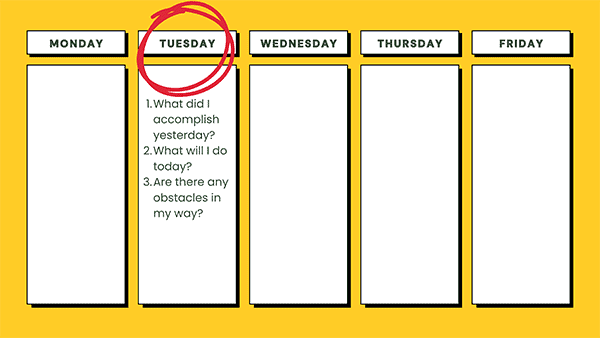
Tips for Teachers Leading Students
Teachers can use stand-up meetings with students for accountability and track progress. It helps students develop a routine and stay focused on their tasks because they will each take a turn verbally stating their goals and accomplishments.
Application by Parent Volunteers
For parent volunteers, stand-up meetings can be conducted at the start or end of each work session. This keeps everyone aligned and aware of challenges that need addressing.
“It is always a good idea to follow up on these tasks in an email or handout after the meeting,” veteran yearbook adviser and Treering Yearbook Evangelist Ed G. said.
3. Over-Editing
Constantly revising and over-editing pages can eat up valuable time. While some revision is necessary, excessive tweaking can lead to delays. Establish clear guidelines for when a page is considered "final" to avoid endless editing cycles. Unless your yearbook tradition includes a fall delivery or ship-to-home, you want to make your final deadline.
“If students get the yearbook later than expected, they won't care how perfect it is,” Ed G. said. “They will remember getting it late and not being able to get all of their classmates' signatures.”

He advocates for sharing a disclaimer so students and families know it is a volunteer-driven effort. (You can make it your own by editing it here.)
4. Disorganized Assets
Managing photos, articles, and other yearbook content without a proper organization system can lead to wasted time searching for files. A well-organized photo management system is crucial.
“Upload photos as soon as possible after an event and use tagging and folders to keep organized,” Kate H. said. (She leads two volunteer yearbook teams for her son’s elementary school and daughter’s dance company.) “Bonus points if you can add your photos to the spread at the same time too.”
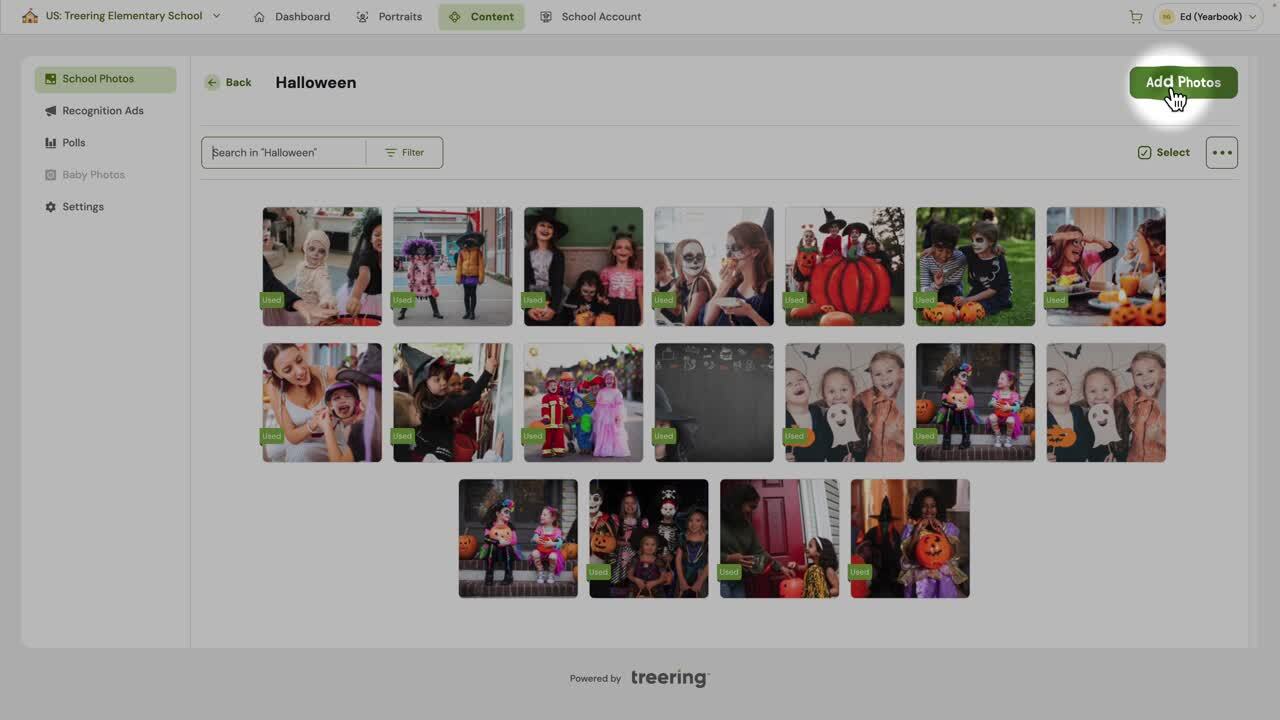
5. Unclear Roles and Responsibilities
When team members are unsure of their roles and responsibilities, tasks can fall through the cracks or be duplicated. Clear role definitions help ensure accountability and productivity.
“I think every kid on the team was assigned to the same pages this year so it was unclear who was actually in charge of it,” middle school club leader Ali J. said.
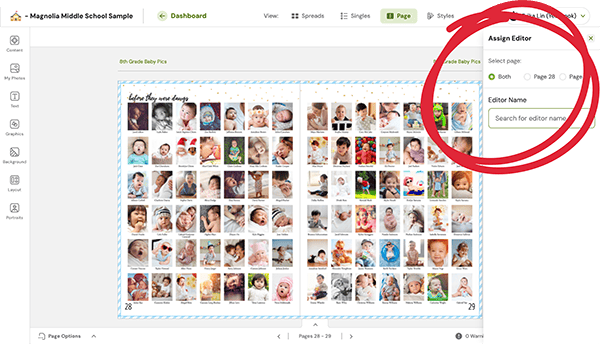
Tips For Leading Students
While it’s important to allow students to take ownership of the project, they will still need guidance and support. You can do this by
- Assigning yearbook spreads to one or two students max
- Having pre-assigned job descriptions/roles
- Being available to answer questions
- Providing actionable feedback
- Teaching them to use the Help Center
Application by Parent Volunteers
Clarity in roles helps prevent duplication of effort and ensures that all aspects of the yearbook are covered. Teams should have codified expectations for:
- Who will photograph each event
- When photos should be in their folder
- What activities will be open for submissions and how this will be communicated
Regular productivity check-ins (see stand up meetings, above) either in person or via video calls, keep everyone informed and engaged.
6. Unresolved Conflicts
Interpersonal conflicts that are not addressed can create a toxic environment in the yearbook club, lowering morale and productivity. Addressing issues promptly is key to maintaining a productive team.
Early detection, while uncomfortable, can eliminate problems later on. Address it (kindly) as soon as it happens so your team can press forward.
When you do get that face-to-face moment, maintain your professionalism:
- Communicate with specifics: instead of “You’re always unreliable,” try “You volunteered to take Fun Run photos and did not have a backup in place when you were a no-show. What is your plan to get pictures?”
- Keep it focused: the conversation should center around yearbook responsibilities and not on personal issues. You’re not meeting to be a relationship counselor, life coach, or even a friend. You’re a project manager looking to complete a job.
- Be proactive: document what will happen next. If your yearbook volunteer wants to remain in the role, write out what it will look like with clear expectations and deadlines. Also include an “out” clause if your volunteer continues to be unreliable. Share a copy with school administration if your volunteer is a student or co-worker.
Teambuilding
Obvious statement: effective teamwork makes for a successful yearbook project. Here are our favorite ideas to improve rapport and trust up front.
Tips For Leading Students
Formal activities, such as an exercise, and informal ones, such as a bell ringer, help students open up. Debriefing can also increase empathy: ask students what they can do to make yearbook interviews less intimidating for students outside of the yearbook team.
Application by Parent Volunteers
Parents aren’t going to want to sit around constructing marshmallow and spaghetti towers. Instead, schedule some forced fun:
- Pickleball and a playdate at the park
- Share team members' baby on the parent group's social media channels and ask followers to guess who (while asking for baby pics for the yearbook)
- Coffee after drop-off
- Yearbook Team Night Out at ax throwing, a driving range, or a craft café
Careful refinement of your workflow and the elimination of yearbook productivity blockers will reduce stress and improve morale. By identifying and addressing these common barriers, you can significantly increase productivity and ensure the smooth and timely completion of your yearbook.
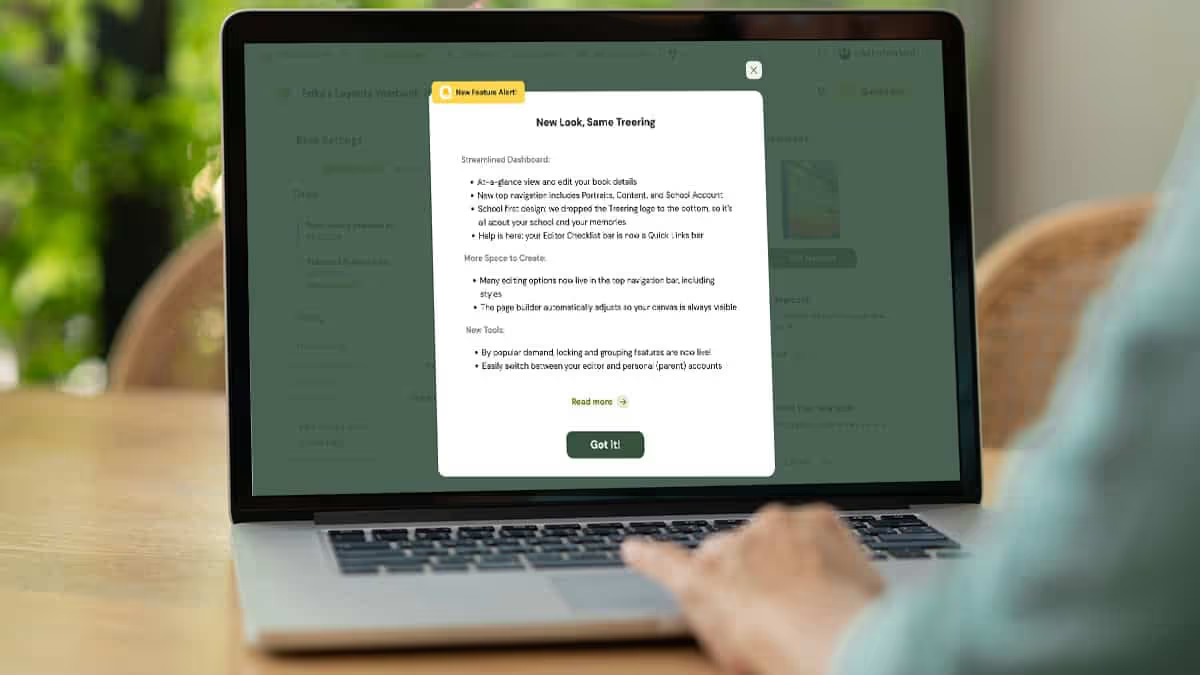
New enhancements to our yearbook builder
Editor requests are at the top of Treering’s to-do list, from introducing a yearbook donation option to click-and-go Heritage Covers. Last year’s Glow Up kicked off this design enhancement. Bottom line: your story evolves, so why shouldn’t your yearbook software?
Two Words: Grouping and Locking
Yearbook editors requested these design tools because they facilitate editing ease, consistency in design, and layer management.
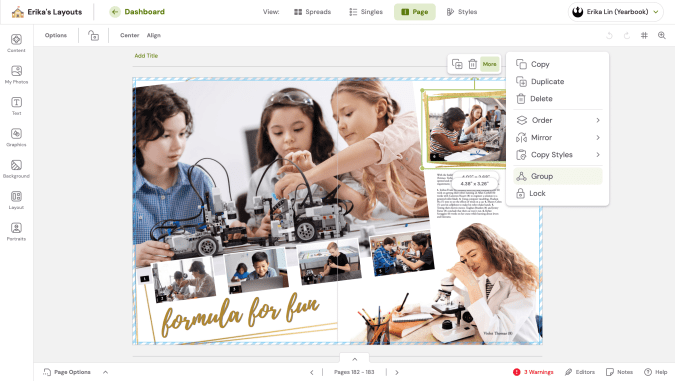
Grouping Feature
By grouping related elements on your spread, it’s easier to edit or modify them collectively. This helps when working on modules or spreads with numerous design elements or layers. A click simplifies the design process and enhances overall efficiency.
Lock Feature
Locking page elements prevents unnecessary edits, especially when working with layers. This feature locks and unlocks theme art, photographs, and text boxes.
When collaborating with others on yearbook design, these features are valuable because they help maintain consistency while giving you increased control over the editing process.
More Space to Create
The most noticeable change is in the yearbook builder: new menus “provide more horizontal space” (that’s user interface speak for Chromebook-friendly).
This includes:
- Moving the navigation and most common editing tools to the top toolbars
- Using the left panel for less-used design features (think glow and drop-shadows)
- Introducing “fit to screen” as a zoom option
- Placing the page switcher, help buttons, notes, and editors in the bottom toolbar
And unless you change the settings, the page builder automatically adjusts so your canvas is always visible.
“How Do I Get Rid of the Red Lines?”
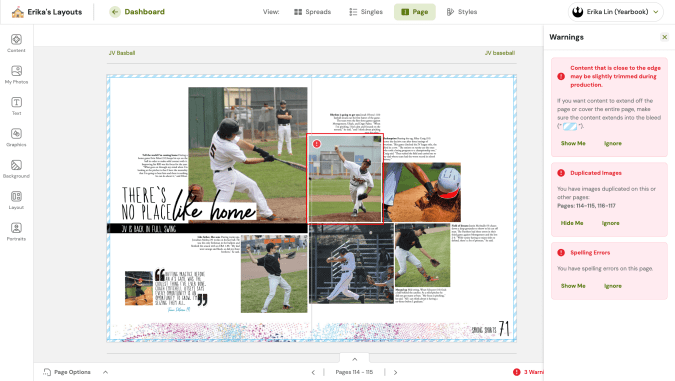
Use the new page warning tray to manage duplicate images, low-resolution images, margin warnings, and spelling errors. If it's irrelevant ("Why, yes, I do want that bleed"), hit ignore and move on.
Your Account
The dashboard continues to be your control center: edit deadlines, cover finishes, and page count with a click. Two updates give you more power.
Dashboard
Your Editor Checklist is now a Quick Links bar: stay on track and get help ITM by watching videos or using our editor guides. Yearbook pro? Minimize the list and get to work.
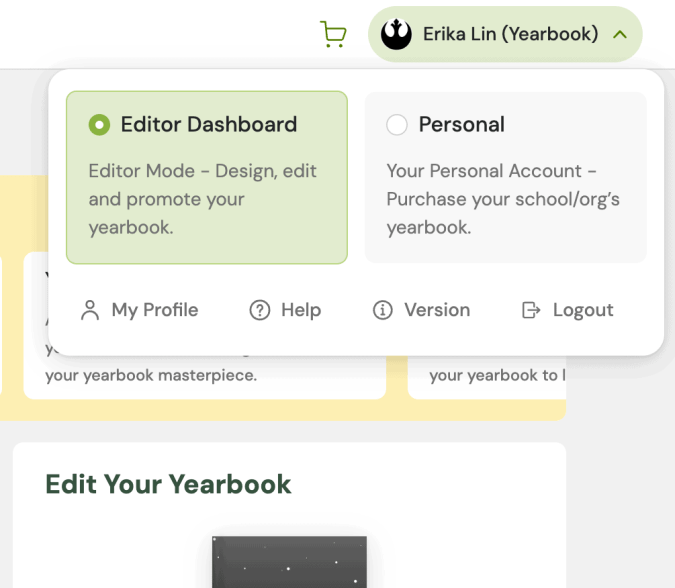
Switching Between Roles
The top navigation bar also gives parents who double as editors a centralized access point for all their school associations.
- Profile switcher allows an easy switch between editor and parent account
- School switcher helps editors move between multiple campuses or organizations
New Look, Same Treering
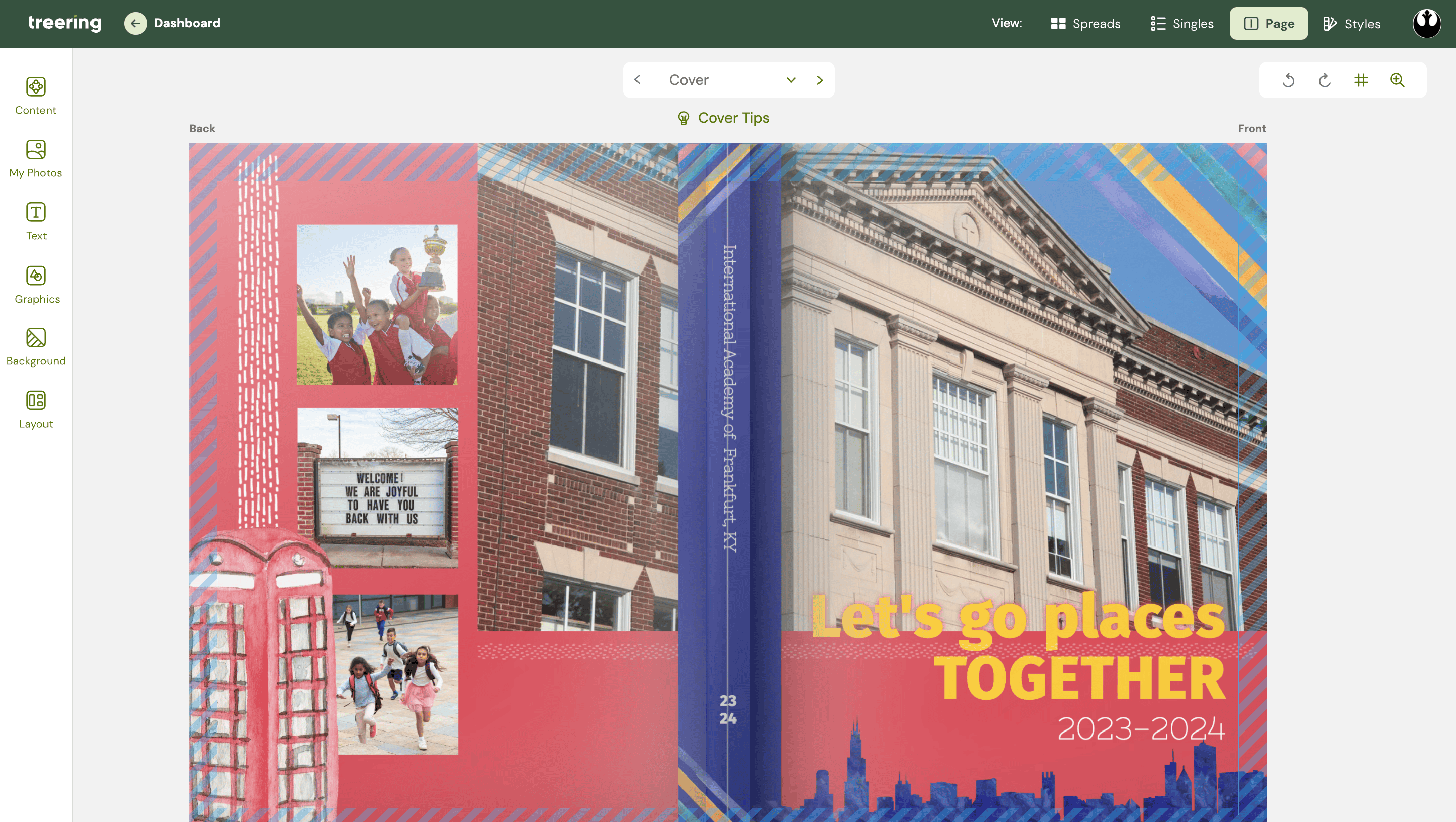
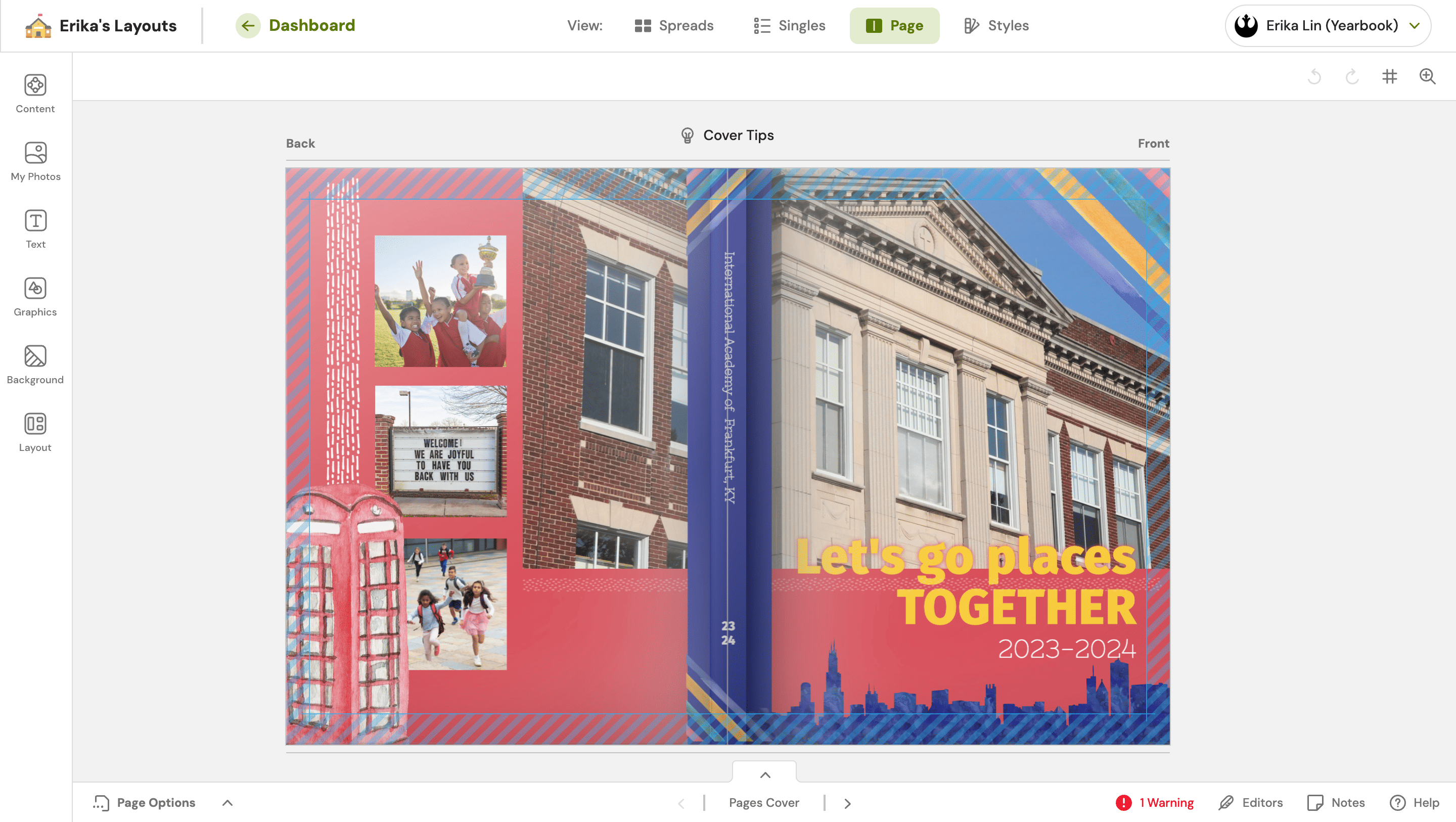
By changing out our green, your book will dominate the look of the new interface. This school-first design reminds us that Treering is in the memory-making business because of you.
Happy yearbooking!
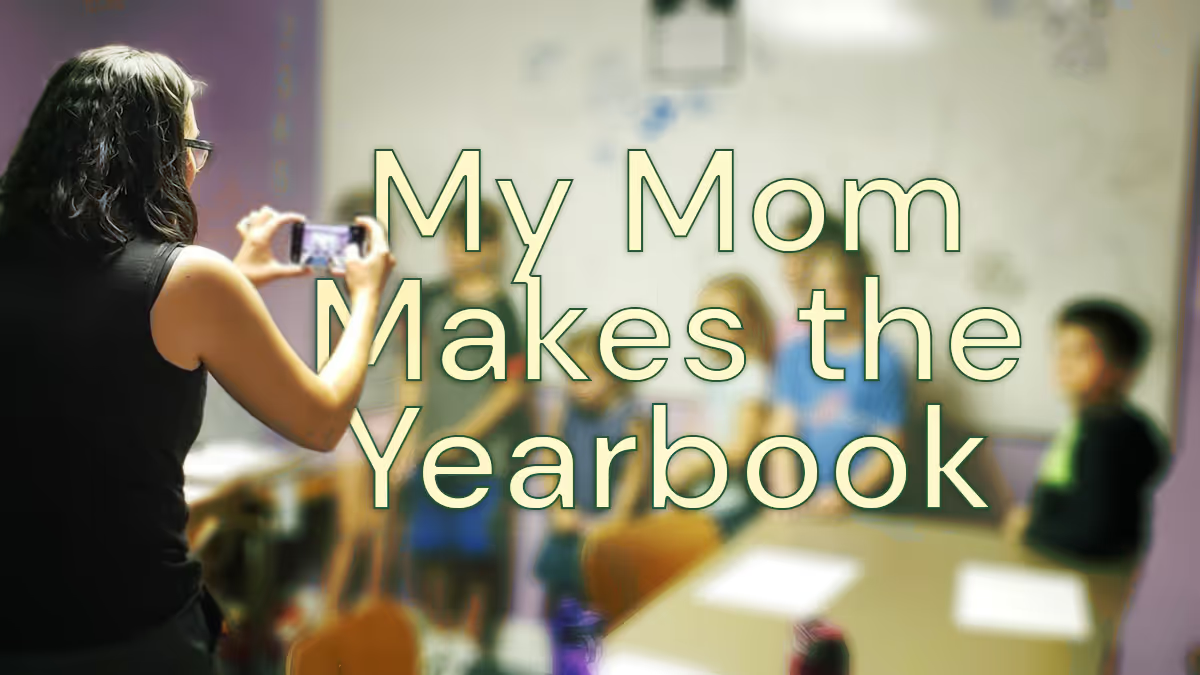
My mom makes the yearbook
Taking over this yearbook blog is a big deal for me: I don't remember a time without a yearbook. Now that I’m about to finish middle school and have eight yearbooks to look through, my appreciation for them leveled up. Yearbook moms (and dads) deserve our appreciation. If you are thinking about joining their ranks, know it impacts your kids and their friends.

My Yearbook History
The oldest yearbook memory I have was when I tried to get as many signatures as possible in my book. My friends and I once had a competition to get the most. We’d ask everyone at lunch and during after-school care to sign ours. Because my mom ran the yearbook, I had an advantage with the older kids. They all knew her, and she’d talk about me in class.

Now, the signing part is more or less to show my kids one day that I did have friends. My school does its signing party in the summer. I look forward to it because I get to see all my friends again.
Before I started fourth grade, my family moved across the country. When I changed schools, yearbooks became even more important. They helped me remember my old friends. Since yearbooks capture memories of the school year, I use them to brag to my friends about doing things like scoring a touchdown or winning the science fair.
How My Mom Makes the Yearbook
At my old school, my mom taught the yearbook class. The yearbook students were recognizable on campus. Now, my mom takes photos at school and recruits other moms. She then uploads them and puts them on pages. When it comes to design, she uses the pages to organize how events happen at school. Sometimes I get out all my books and look through them so I can remember.
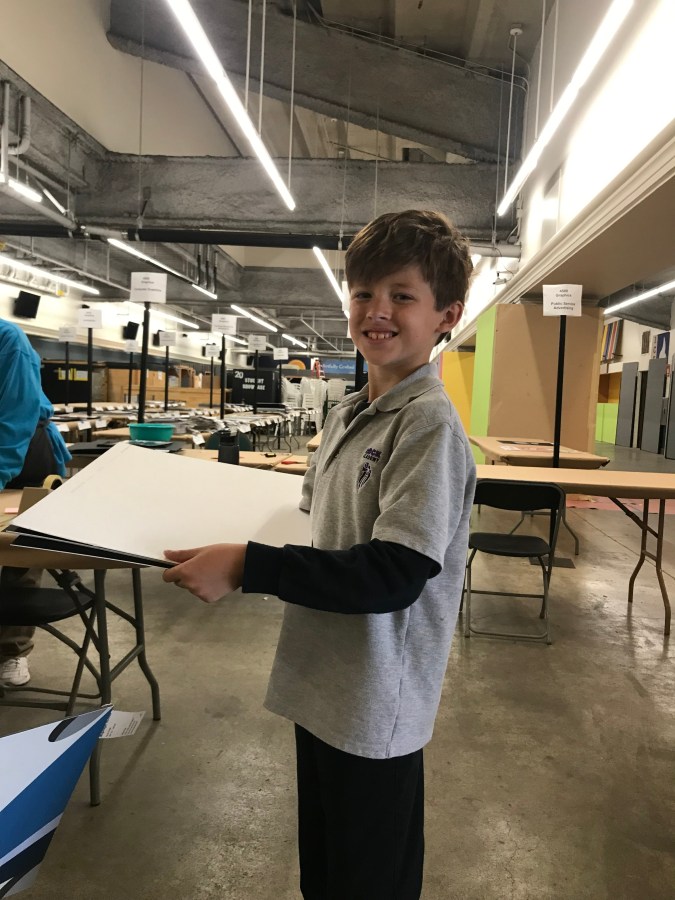
Every year, she chooses a theme, and she doesn’t tell me what it is. At our school, it’s a surprise for the end of the year. No matter how much I beg, she won’t tell me. If the book was bland or the designs were scattered, it wouldn’t make much sense. I’m glad she puts time into making something that looks like the school year. Each one is different: 3D, like a journal, or even patriotic.
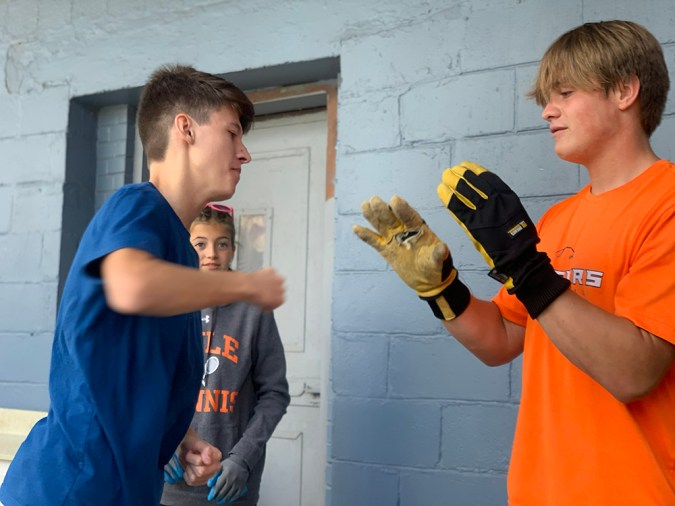
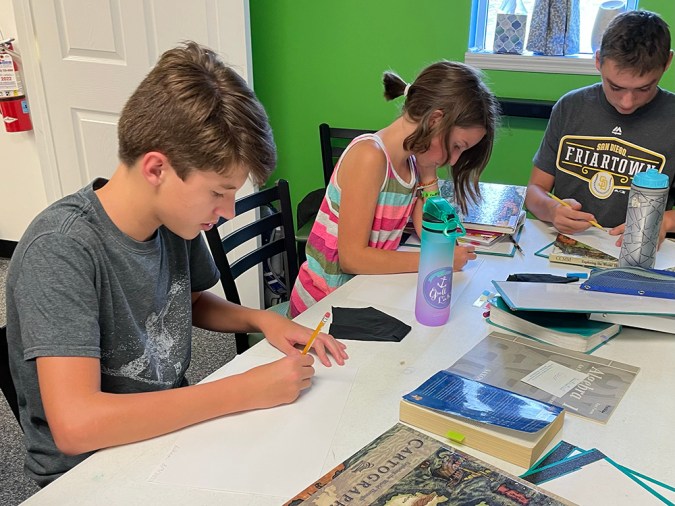
Having a Yearbook Mom
Now that my mom is making the yearbook as a volunteer instead of a teacher, she does all the work from home. Even though she constantly takes pictures of my friends and me in class or hanging out at recess, it feels good to know we will all be in the book. She knows us, and we can all relax (OK, I’m not always relaxed because she can sometimes be embarrassing).
Know it’s a good idea to be a yearbook mom (or dad). You’ll help more kids get in the book. You also get to help make something special that your kids and their friends will look at over and over.
Guest blogger Erikson (age 13) spends his time outside school cooking with his culinary team, serving as the 4-H teen leadership council vice president, and volunteering with Giant Cow Ministries. His Treering custom pages feature family vacations and 4-H achievements.

Vacation vibes: take a yearbook breather with beach reads and podcasts
As any yearbook adviser will likely concur, one of the most beautiful sights on the internet is the celebratory confetti that fills your screen when you hit “print ready.” Now that summer break is underway and your yearbook has gone to print, it’s time to indulge in well-deserved relaxation. Whether you're opting for a tropical vacation or a cozy staycation, the Treering team has curated a selection of delightful beach reads and captivating podcasts to enhance your leisure time.
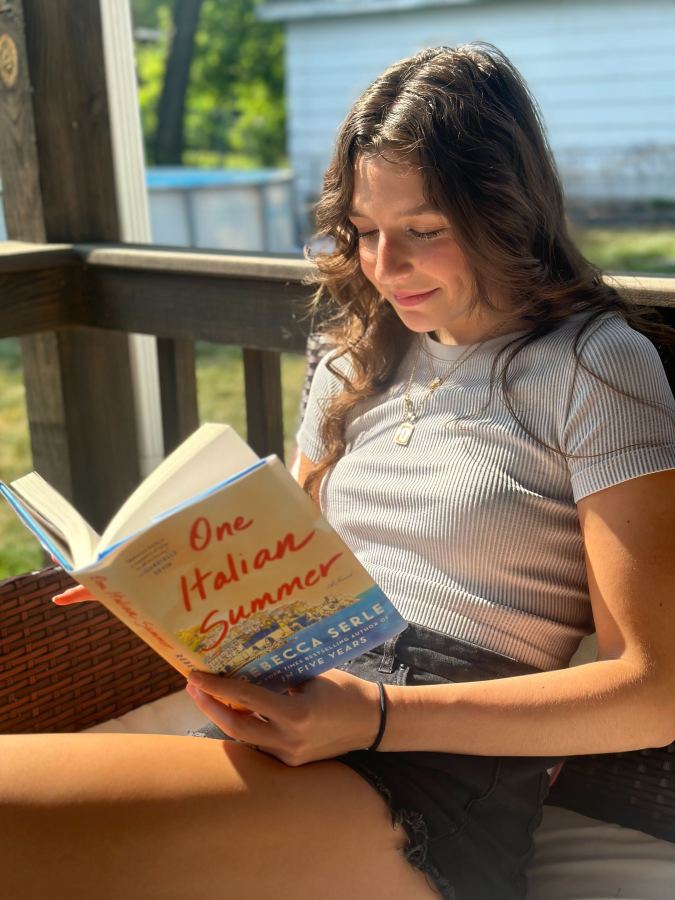
Beach Reads to Dive Into
If you're an avid reader with a never-ending list of books to conquer, now is the perfect time to get caught up in a good read. Here are a few to add to your shortlist:
- One Italian Summer by Rebecca Searle (recommended by Chrissy K., Customer Success Manager): A 30-year-old married woman from Los Angeles, finding herself adrift after her mother’s death, travels to Italy on a long-awaited vacation they had planned to take together. (Kirkus Reviews)
- Trust by Hernan Diaz (recommended by Bobby H., Head of Growth): A riveting novel set in a bygone America that explores family, wealth, and ambition through linked narratives rendered in different literary styles, a complex examination of love and power in a country where capitalism is king. (The Pulitzer Prizes)
- Then She Was Gone by Lisa Jewell (recommended by Ayesha M., Sales Development Representative): Ten years after her teenage daughter disappears, a woman crosses paths with a charming single father whose young child feels eerily familiar... (Greenwich Library)
- The Joy Luck Club by Amy Tan (recommended by George K., Head of Product): In 1949, four Chinese women, recent immigrants to San Francisco, begin meeting to eat dim sum, play mahjong, and talk. United in shared unspeakable loss and hope, they call themselves the Joy Luck Club. Rather than sink into tragedy, they gather to raise their spirits and money. (Amazon)
Poolside Podcasts
If you prefer to relax with headphones by the pool, here are some podcast recommendations that are sure to pique your interest:
- Gee Thanks. Just Bought It! hosted by Caroline Moss (recommended by Megan P., Marketing Manager): Ever bought something you loved SO much that you couldn't stop telling everyone about it? Los Angeles-based writer and host Caroline Moss invites interesting, smart, and savvy guests to evangelize their favorite buys in the hopes of helping you become a smarter and more informed shopper.
- The Way I Heard It, hosted by Mike Rowe (recommended by Erin M., Sales Development Representative): From pop culture to politics, history to Hollywood, each mystery is a true-ish tale about someone you know, filled with facts that you don’t. Delivered with Mike’s signature blend of charm, wit, and ingenuity, these stories are part of a larger mosaic—full of surprising revelations, sharp observations, and intimate, behind-the-scenes moments drawn from Mike’s life and career.
- On Purpose, hosted by Jay Shetty (recommended by Shannon H., Sales Development Representative): Jay Shetty’s purpose is to make wisdom go viral. His podcast brings fascinating conversations with some of the most insightful people in the world straight to viewers worldwide.
- Hey Dude… the 90s Called, hosted by Nickelodeon child stars David Lascher and Christine Taylor from the cult classic show Hey Dude (recommended by Erika Lin P., Marketing Manager): You won’t be Clueless about your favorite shows when the crew from West Beverly and Bayside High, among others, share gossip, coming of age takes, on set challenges, and fan encounters.
Embrace the Vacation Vibes
Whether you prefer turning the pages of a good book or immersing yourself in a fascinating podcast, we hope these suggestions enhance your well-deserved break from yearbook responsibilities. (If you can’t help yourself, check out this Summer Yearbooking blog.)
Happy Summer!

Camera pros and cons
A digital single-lens reflex (DSLR) camera is what our minds associate with photographers. It’s the tool of the trade. But is it the best thing for our yearbook teams? Cell phone cameras have their own pros and cons–we’ll explore both sides so you can choose what’s best for your team.

Benefits of a DSLR
When using a DSLR, you generally* get high-quality images due to full control of the exposure triangle. These features offer greater versatility to adjust for lighting conditions, like gyms and choir concerts. (I say generally because a con of DSLR cameras is the blind faith amateur photographers put in them. The camera alone does not make the shot.)
A DSLR also has interchangeable lenses for various scenarios:
- The nifty fifty for classroom shots
- A telephoto lens for concerts, assemblies, or sports events to capture shots without needing to be up close
- The all-purpose 18-135mm
Using a DSLR camera may help yearbook creators feel more professional—after all, you are selling the yearbook. It may unleash a new passion in students and volunteers as they master different settings.
A major con is the additional expense associated with the gear. Lenses and camera bodies do not intermingle, so if you have Nikon, Sony, and Canon in your equipment cabinet, you’ll need to take additional precautions to keep them separate.
Additionally, they can be bulky, and if you’re carrying multiple lenses, it can feel like lugging a small suitcase. Plus, not all models have Bluetooth, so transferring photos requires connecting to a computer, which can be time-consuming. Some students may feel intimidated by large cameras, so it’s worth considering if this is the best option for close-up situations.
Using a Cell Phone for Yearbook Photos
Alternatively, using your phone or tablet camera has benefits. Compact and always at hand and ideal for capturing moments on the go, cell phones are usually in the back pocket of yearbook creators. (And unless your kid is on the yearbook team, you didn’t pay for it. Score!) They are convenient and much less intrusive than their DSLR counterparts—plus when photographing camera-shy students.
The main con is that phones don’t offer as much control over camera settings. While cell phones are continuing to improve portrait and low-light modes, they may still look over-edited or may lack quality. Digital zoom is also destructive (it easts pixels) and can reduce resolution.
Tips for Using Cell Phones
When using a cell phone to take yearbook photos,
- Shoot in well-lit conditions (natural light is always best).
- Avoid digital zoom–like my yearbook adviser always said, “Zoom with your feet.” move closer instead.
- Tap the screen to focus and adjust brightness manually by using the slider.
Can I Use a Tablet To Take Pictures?
Some schools are switching to tablets for yearbook photography because of school policies on cell phone usage. Like cell phones, they are familiar devices, especially for younger yearbook creators.
While tablets can be used for yearbook photography, they typically lack the camera quality and features found in smartphones. Using a tripod (image stabilization) and photographing in HDR (High Dynamic Range) setting will improve the crispness of photos if you don’t have a “pro” model in your budget.
Quick Tips to Improve Your Yearbook Photos
Bottom line: whatever tool you use, you can take better photos by improving your composition skills. Practice by taking lots of photos at events. You’ll soon apply those framing and lighting techniques instinctively as you learn where to stand (and move) to get the best shot.
Teachers and club leaders should make a weekly habit of practicing composition techniques to improve students’ skills. We created a BINGO card to help. Play a class-wide game of coverall, have sections compete against one another (e.g., student life vs. athletics), or make it an individual activity.
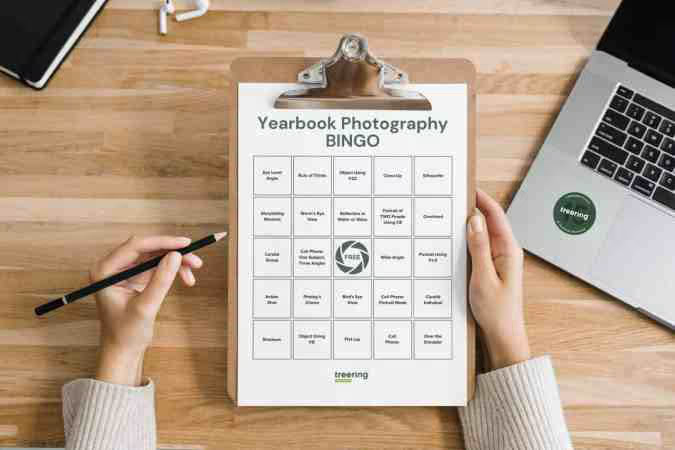
This blog is adapted from Sandra Violette’s Photography session from TRL 24 POV: I’m on the Yearbook Team. Violette, a professional photographer and PTO mom, serves on the Onboarding and Engagement Team at Treering Yearbooks.